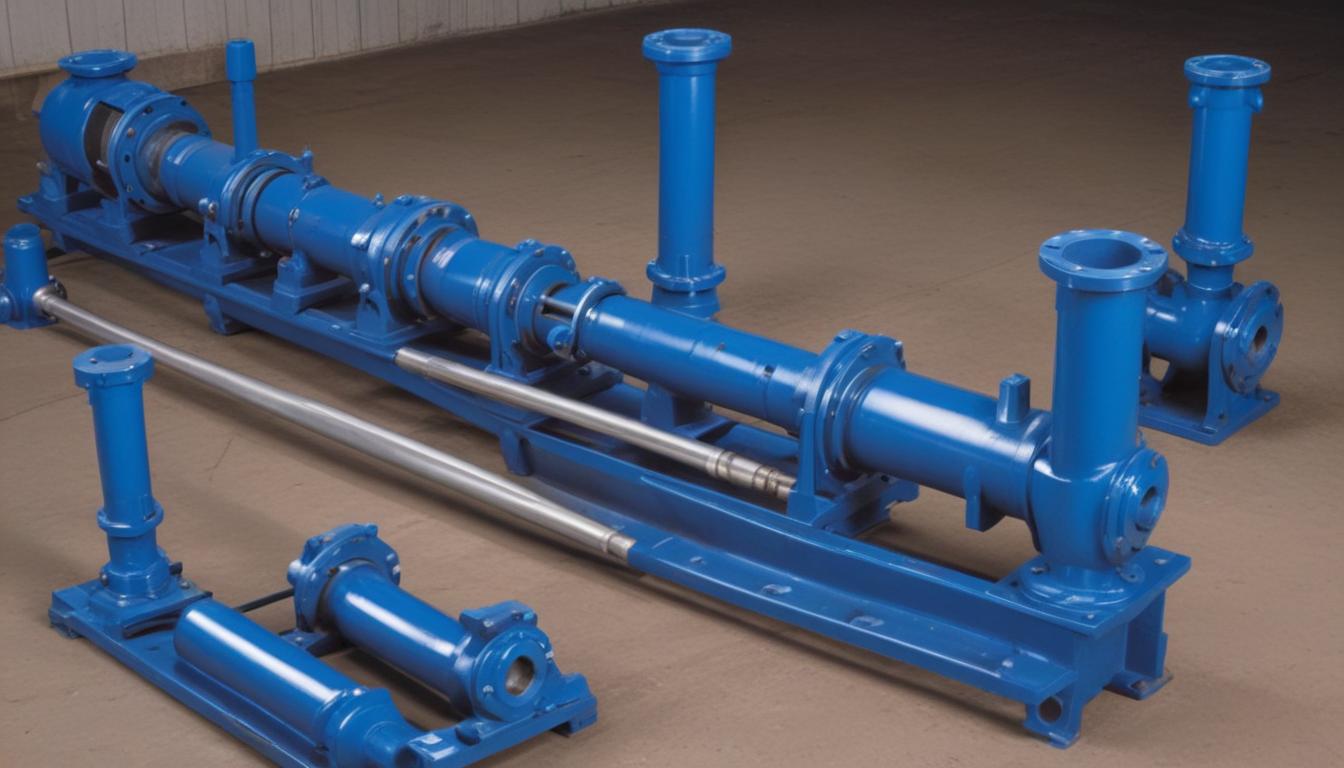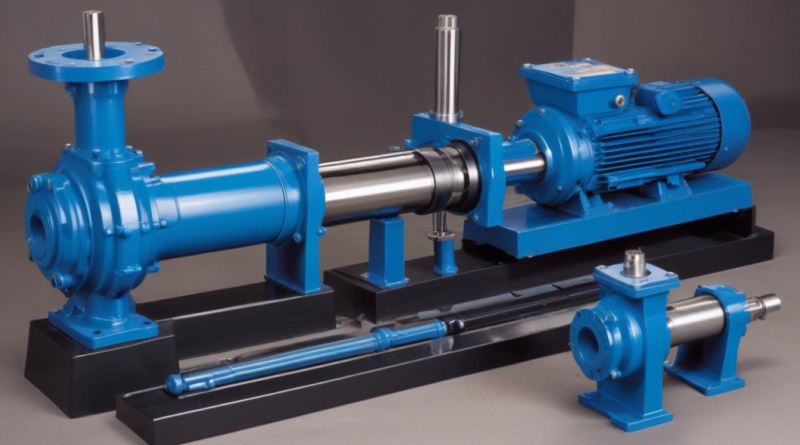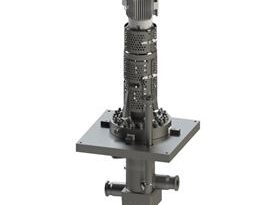The history and evolution of progressive cavity pumps
The development of progressive cavity pump technology has a rich history marked by innovation and adaptation to various industrial needs. Initially conceptualized in the 1930s, these pumps were designed to enhance the efficiency of fluid transport, particularly for viscous materials. The foundational work by engineer Henri Perrot led to the first practical application of this technology, focusing on a helical rotor that creates a series of cavities, allowing for a smooth and continuous flow.
Throughout the 1940s and 1950s, various industries began to recognize the benefits of utilizing progressive cavity pumps in their operations. Manufacturers started to refine the pump design, enhancing the rotor and stator combination to achieve better performance metrics, such as higher efficiency and reduced pulsation. With each advancement, these pumps demonstrated superior adaptability to challenging pumping scenarios, particularly in the oil and gas, wastewater management, and food processing sectors.
In the following decades, the emphasis on reliability and reduced maintenance led to significant technological improvements. The introduction of advanced materials, such as stainless steel and elastomers, increased the durability and lifespan of the pumps, making them suitable for handling abrasive and corrosive substances. The integration of computer-aided design (CAD) technologies further facilitated the optimization of pump dimensions and geometries, resulting in enhanced operational capabilities.
Additionally, the adoption of variable frequency drives (VFDs) in the 1990s allowed for improved control over the pump operation, leading to significant energy savings and operational flexibility. These enhancements marked a pivotal moment in the evolution of progressive cavity pump technology, enabling them to meet the diverse requirements of modern industries efficiently.
The ongoing evolution of progressive cavity pumps illustrates a clear trajectory towards higher performance, greater efficiency, and broader applicability across various industrial environments. As industries continue to demand more advanced pumping solutions, the future of this technology looks promising, driven by a commitment to innovation and excellence in pump design.
Key milestones in the evolution of progressive cavity pumps
Several key milestones have defined the evolution of progressive cavity pumps since their inception, shaping their capabilities and applications. One of the earliest significant advancements came in the mid-1940s, when the introduction of the first standard-sized pump models enabled wider adoption across various sectors. This move was crucial in setting a foundation for manufacturers to build upon, establishing benchmarks for performance and reliability.
In the 1960s, further innovations included the development of the double helical rotor design, which drastically reduced the hydraulic load placed on the rotor and stator, improving overall pump efficiency and minimizing wear. This design modification contributed to an increase in flow capacity and allowed for smoother operation, addressing the needs of industries requiring reliable solutions for high-viscosity fluids.
The 1970s brought about another milestone with the advent of self-priming progressive cavity pumps. This feature significantly enhanced the usability of these pumps in environments where suction was a critical requirement, expanding their application in fields like environmental engineering and chemical processing. The ability to handle air entrainment added versatility, paving the way for further exploration of progressive cavity pumps in industries where traditional centrifugal pumps fell short.
During the 1980s and 1990s, advances in material science played a pivotal role in the pump’s evolution. The introduction of polymer materials and improved elastomers resulted in lighter, corrosion-resistant components that maintained integrity even at elevated temperatures and pressures. This shift not only enhanced pump durability but also enabled progressive cavity pumps to operate efficiently under a wider range of conditions, thus broadening their application scope.
In the early 2000s, the integration of technology into pump design began to revolutionize how progressive cavity pumps were controlled and monitored. The implementation of smart sensors and IoT capabilities has allowed for real-time diagnostics and predictive maintenance, significantly reducing downtime and operational costs. These technological innovations have led to a new era in the history and evolution of progressive cavity pumps, where data-driven insights are employed to optimize performance continuously.
The cumulative effect of these milestones is a robust platform from which progressive cavity pumps have evolved, now standing as a staple across diverse industries ranging from oil and gas to biotechnology. This evolution showcases not only the ingenuity of design improvements but also the industry’s responsiveness to changing operational needs and challenges.
Design innovations and their impact on performance

In the design of progressive cavity pumps, several innovations have notably impacted their performance and efficiency, making them vital in various industries. One of the most significant advancements is the development of advanced rotor and stator geometries, which has enhanced the pump’s flow characteristics. The helical design allows for a consistent and smooth transfer of fluids, significantly reducing turbulence and improving overall efficiency. Innovations such as optimization of the rotor pitch and diameter enable pumps to accommodate a wider variety of viscosities while maintaining reliability.
Another critical area of innovation is the use of high-performance materials. The incorporation of thermoplastic elastomers and specialized alloys has led to improved resistance against wear and corrosion, allowing progressive cavity pumps to handle abrasive or chemically aggressive substances without significant degradation. The result is an increased lifespan and less frequent need for maintenance or replacement, which is economically advantageous for operators.
Design modularity has also played a crucial role in extending the applications of progressive cavity pumps. Modular designs allow for easier customization based on specific operational requirements, such as size, capacity, and material compatibility. This flexibility ensures that the pumps can be tailored for unique industrial challenges, potentially enhancing the efficiency of processes across sectors from food processing to petroleum extraction.
Moreover, the integration of dynamic simulation software in the design phase has made it possible to predict and analyze pump performance under various conditions before physical prototypes are constructed. This has reduced time and costs associated with trial and error in real-world applications, leading to the swift identification of design flaws and optimization of pump features.
Sealing technology has also seen improvements, with innovations in mechanical seals and sealing materials reducing leakage and preventing contamination of the pumped fluids. Effective sealing is essential in industries such as wastewater treatment and pharmaceutical manufacturing, where the integrity of the process is crucial.
Technological advancements in monitoring and control systems are increasingly being incorporated into the operability of progressive cavity pumps. Features such as remote-monitoring capabilities, automated control systems, and predictive maintenance analytics empower operators to keep their pumps running at optimal efficiency, reducing energy consumption and operational costs while maximizing output.
The innovations in the design of progressive cavity pumps reflect a commitment to enhancing performance, reliability, and adaptability. As industries continue to evolve and face new challenges, these design breakthroughs will undoubtedly shape the future trajectory of progressive cavity pump technology.
Applications and industries utilizing progressive cavity pumps
Progressive cavity pumps have found extensive applications across a variety of industries due to their unique design and operational efficiencies. These pumps excel at handling a broad range of fluids, including highly viscous, abrasive, and corrosive materials, which makes them indispensable in several sectors.
One of the most prominent applications of progressive cavity pumps is in the petroleum industry. They are utilized for moving crude oil, heavy oil, and various process fluids due to their ability to maintain a continuous flow without pulsation. This minimizes shear stress, which is particularly important when handling sensitive materials or fluids. Additionally, these pumps are essential in enhanced oil recovery techniques, where they manage the injection of water or gas into reservoirs to lift additional oil to the surface.
- Oil and Gas:
- Crude oil transportation
- Heavy oil extraction
- Water and gas injection for enhanced recovery
- Food and Beverage:
- Handling viscous materials like dough and pastes
- Transfer of liquids in processing operations, such as fruit purees or syrups
- Adhering to strict hygiene and sanitation standards, crucial in food processing plants.
- Wastewater Treatment:
- Pumping sludge, which often contains solids along with liquid
- Transferring chemicals used for treatment processes
- Efficient handling of pumpable waste with varying viscosities.
- Chemical Processing:
- Transport of aggressive chemicals and viscous fluids
- Accurate dosing and mixing operations essential for maintaining processes.
- Pharmaceuticals:
- Moving sensitive formulations requiring precise flow rates
- Minimizing shear stress to maintain product integrity, crucial for drug efficacy.
The history and evolution of progressive cavity pumps have enabled them to adapt to the rigorous demands of these industries. As technologies emerge and processing needs grow increasingly complex, their unique design allows them not only to meet current operational requirements but also to continue evolving to encompass new fluid management challenges.
Moreover, industries that require effective management of challenging materials are increasingly opting for progressive cavity pumps due to their versatility and reliability. As the landscape of industrial applications continues to shift, the role of these pumps in enhancing operational efficiency and processing capability remains pivotal.
Future trends in progressive cavity pump technology

Looking ahead, the future of progressive cavity pumps is set to be shaped by technological advancements and industry demands for greater efficiency, sustainability, and customized solutions. One prominent trend is the ongoing integration of smart technologies, including IoT (Internet of Things) and AI (Artificial Intelligence) functionalities. These innovations will enable real-time data monitoring and predictive maintenance, allowing operators to anticipate failures before they occur and optimize pump performance based on current operational conditions.
As industries become increasingly focused on achieving sustainability goals, progressive cavity pumps will likely evolve to incorporate eco-friendly materials and energy-efficient designs. With energy consumption being a critical concern, manufacturers may prioritize the development of pumps that reduce energy usage while maintaining high performance levels. This shift will not only comply with environmental regulations but also appeal to businesses striving for greener practices.
Advancements in materials science will continue to play a significant role in the evolution of these pumps. The potential introduction of innovative composites and enhanced elastomers will improve resistance to wear, corrosion, and thermal degradation. Such materials will allow progressive cavity pumps to handle even more aggressive fluids and operate in extreme conditions, thus broadening their applicability across various sectors.
- Customization:
- Increasing demand for tailored pump solutions to meet specific industrial needs.
- Modular designs allowing for easy upgrades and adjustments in performance parameters.
- Enhanced Monitoring:
- Utilization of advanced sensors for in-depth performance analytics.
- Integration with factory automation systems for seamless operation control.
- Industry 4.0:
- Advancement toward interconnected manufacturing processes requiring adaptable pumping systems.
- Collaboration with other smart equipment to create holistic production environments.
Moreover, the evolution of progressive cavity pumps will be influenced by emerging markets and applications that require advanced fluid handling solutions. Industries such as renewable energy, biotechnology, and advanced manufacturing are likely to provide new opportunities for the deployment of these pumps, enhancing their relevance in a rapidly changing industrial landscape.
As the history of progressive cavity pumps unfolds, it becomes clear that their adaptability and ability to integrate cutting-edge technologies will ensure they remain at the forefront of fluid management solutions. The continual evolution of these pumps will reflect not only advancements in engineering but also the growing complexity of modern industrial processes, positioning them as a cornerstone of efficient manufacturing and resource management strategies.


